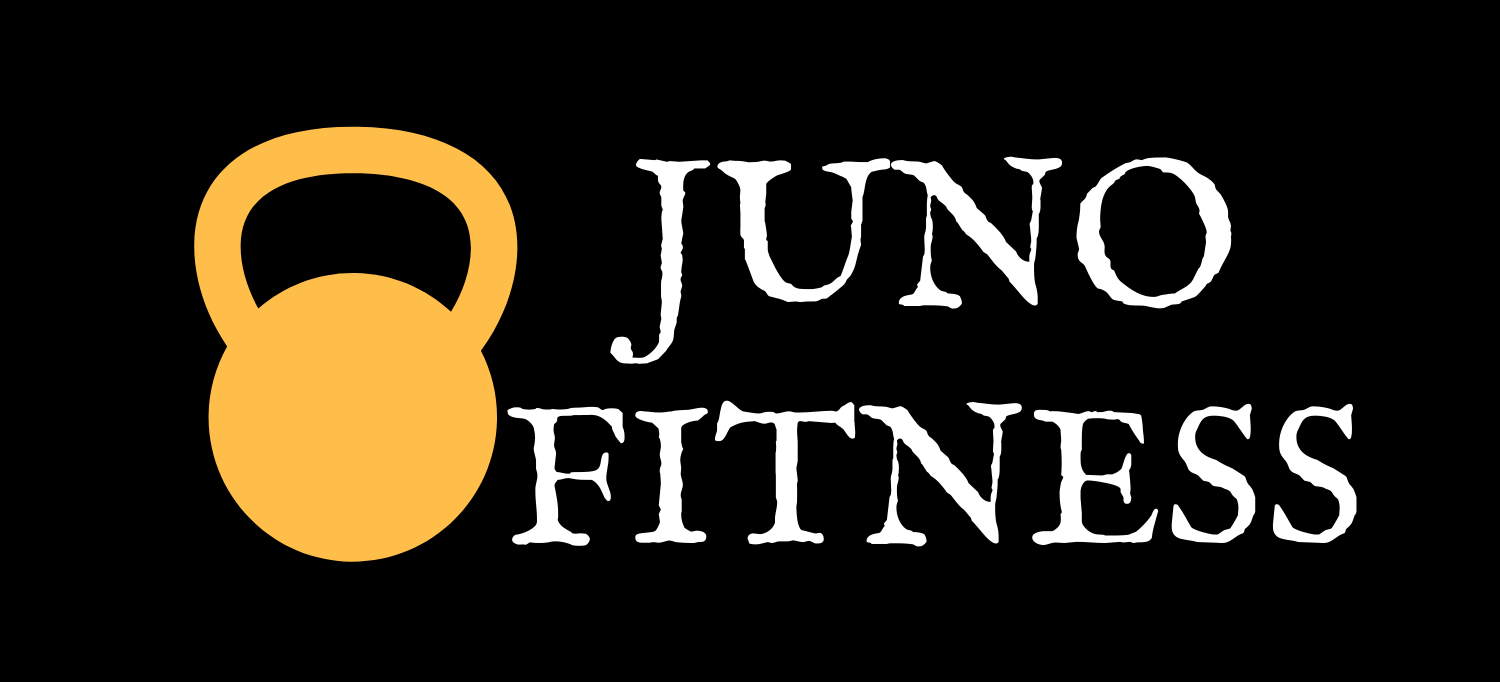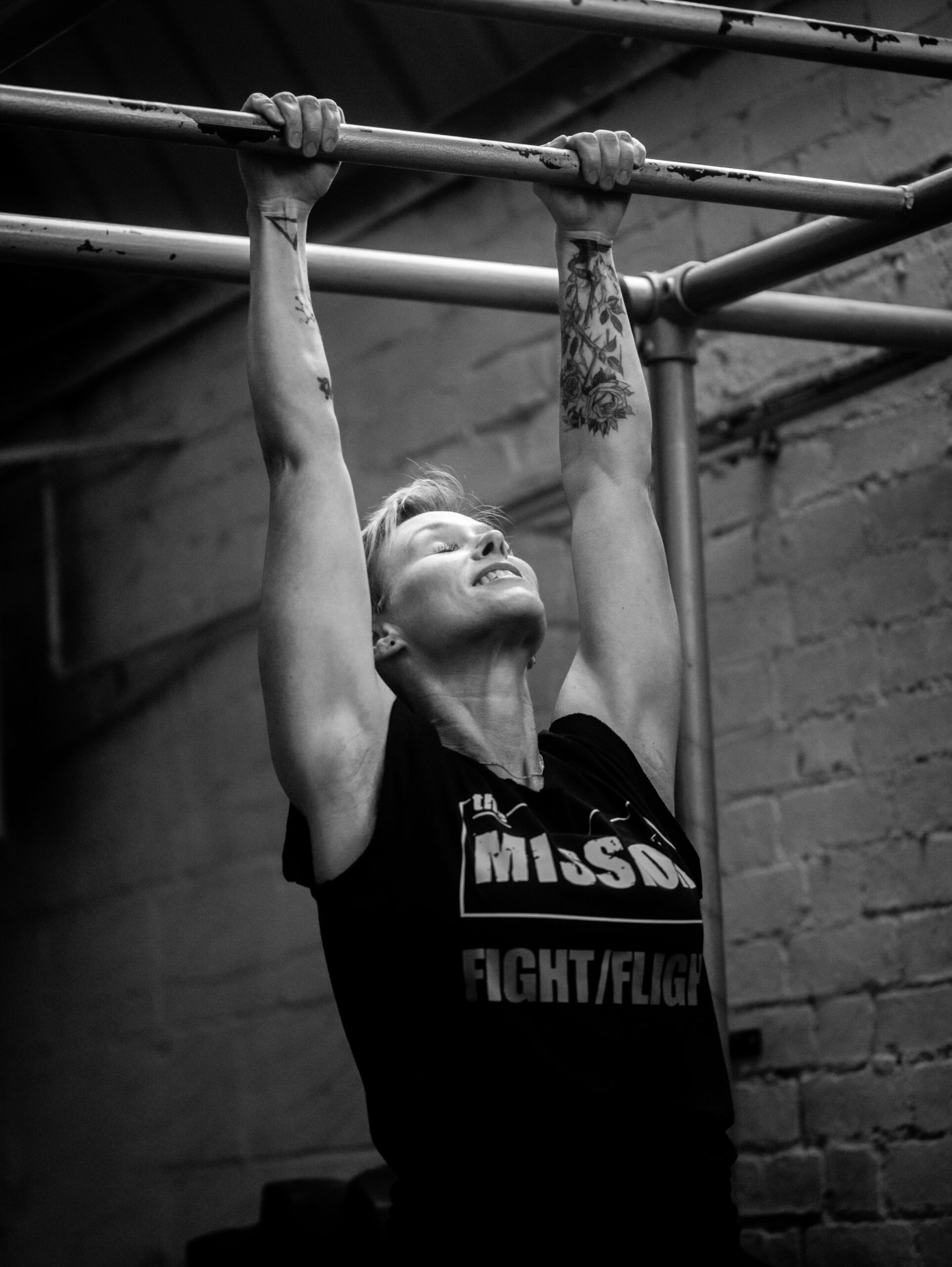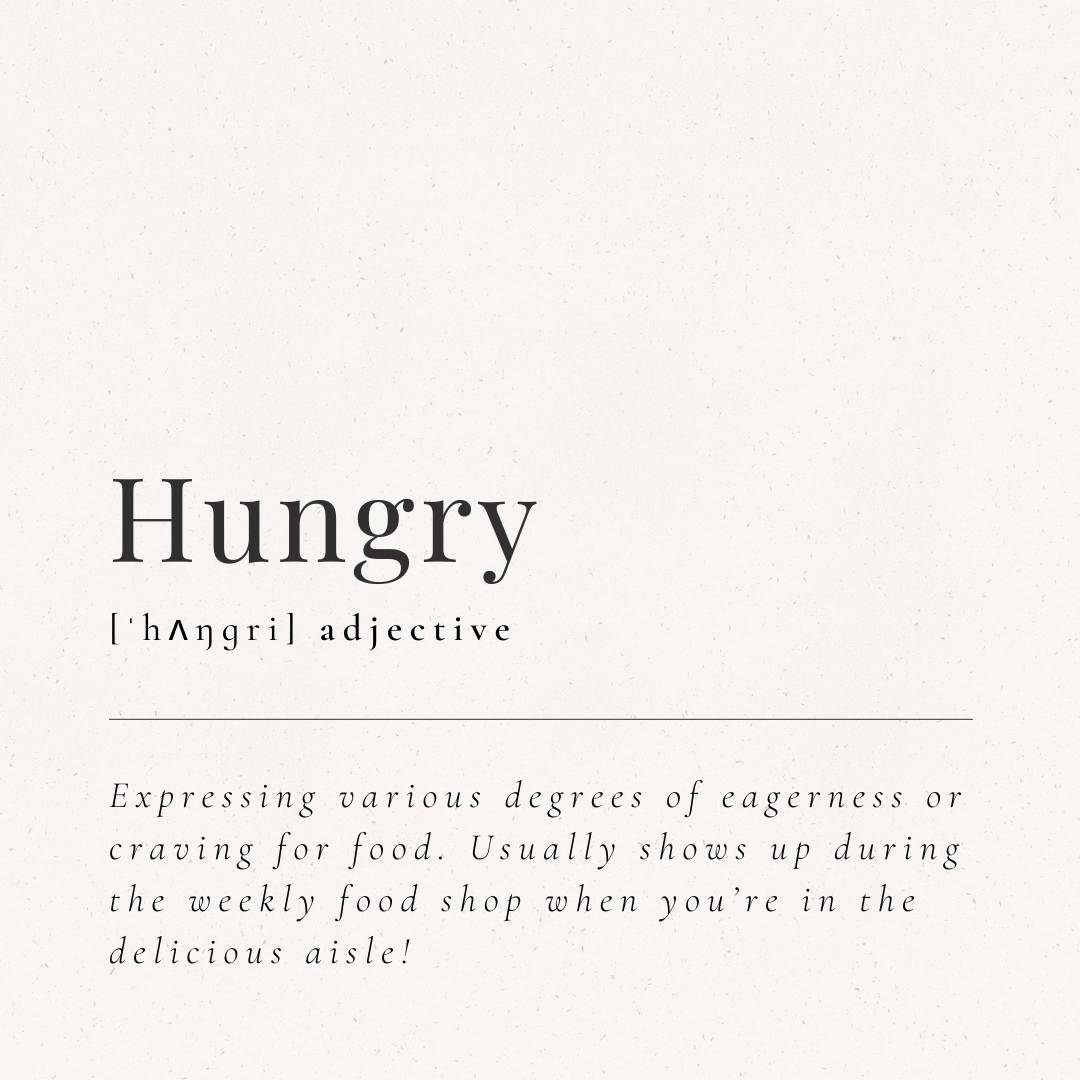What Weight Kettlebell Do I Need?
First things first, what is a kettlebell?
- Parts of a kettlebell
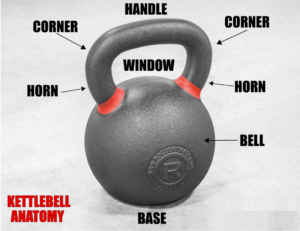 A kettlebell is a cast iron ball with a handle. Accept no substitutions; “cast iron” means that the whole thing is made from one molten piece of iron. It’s not a ball filled with sand, it’s not two pieces of metal stuck together, it’s nothing fancier than one piece of iron and it doesn’t need to be.
A kettlebell is a cast iron ball with a handle. Accept no substitutions; “cast iron” means that the whole thing is made from one molten piece of iron. It’s not a ball filled with sand, it’s not two pieces of metal stuck together, it’s nothing fancier than one piece of iron and it doesn’t need to be.
It’s used to perform different exercises including ballistic exercises (or explosive exercises) that integrate strength, flexibility and cardiovascular training and grinds that teach full body tension, mastery of strength as a skill and subtle but powerful internal structural and metabolic changes to your body.
People love kettlebells for many reasons including their simplicity and their incredible impact on their body shape and athleticism. But let’s get down to details past the obvious. The shape of a kettlebell isn’t an accident, nor is it irrelevant. Lookie here at this diagram and let’s get intimate with your kettlebell.
Handle (you can hold it in the middle), corner (or sometimes you want to hold it here), horns (this is what you hold with two hands for goblet squats and halos), window (the hole that the handle makes!), bell (should be round, accept nothing less) and base (a good kettlebell trainer will tell you which direction the base should be pointing at any given point during an exercise and why).
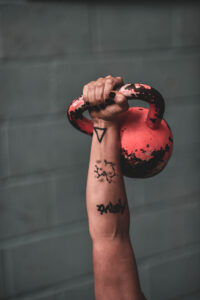
This is all important to know because you wouldn’t want to just grab it and try and copy what you’ve seen randomers on the internet or in your gym class do; the parts of a kettlebell are essential orientation points to make the different kettlebell movements work without hurting you and to make the kettlebell as a tool become a part of your body.
I know, sounds wanky. But you’ll get it when you get it 😉
What weights do kettlebells come in?
Traditionally, 16kg, 24kg and 32kg.
But never fear, enterprising individuals have taken advantage of consumerism so that you can probably get a kettlebell in any weight you want these days!
However, hear me out; there’s utility in simplicity.
4kg jumps in weight is works a special kind of magic.
In my gym, 4kg jumps in weight are queen; starting from 8kg.
Why? When it would make it so much easier to go up in smaller jumps like with barbell training?
Well, I love barbell training but it’s a whole different methodology. I’ll tell you my reasoning for bigger jumps in weight with kettlebell training.
Because to be able to go up 4kg in weight for a grind, that means a strength lift (like a kettlebell press or Turkish Get-Up), you need to OWN the weight before it. You need to know you can make that lift, multiple times, slowly, stopping mid-lift if I asked you. Then, when you’ve made that weight your weight, you can make the next weight your project.
Sure you can use the next weight up before then if you want, and sometimes we do for negatives. But that’s not your weight yet.
And the fact that you have to spend time, weeks, months maybe, on this weight before you own it, is one of those things that makes kettlebells so curiously frustrating yet addictive. They become part of your DNA. Indeed, the changes they make to your body come about because you have to fully respect and allow them to slowly nudge your body and mind into adapting.
For people who like to bulldoze through and just get a good workout in, maintaining this concept of ownership of a weight before you move up will feel very different. It’s arguably more akin to martial arts, but with the physical benefits of lifting heavy shit.
The changes you want to make to your body need to come steadily and they don’t come through blunt force. Permanent changes are made slowly and deliberately, and this is what kettlebell training with the right weights will give you.
So work hard by all means, but work hard with progress in mind, not just drama.
History of the kettlebell
Kettlebells originated in Russia, where they were used to weigh crops in the 18th century. Farmers using them also noted their increase in strength and early records of circus “strongmen” depict images of them lifting kettlebells to demonstrate their great strength. Recreational competition emerged in the 19th century and competitive kettlebell lifting dates to 1885.
In the mid 2000s, kettlebell training left Russia in the hands of one Pavel Tsatsouline. A mythical being (this is possibly untrue) who founded the type of kettlebell training that has the effects that has prompted you to want to use them.
Seek out a trainer who has learned from this family of training schools – including RKC, StrongFirst and DV8. Whilst the skills and teachings aren’t particularly different and are all of the highest calibre required (accept nothing less, or you’ll be accepting less), each school has its own ethos.
So ask questions before committing.
What are kettlebell exercises? 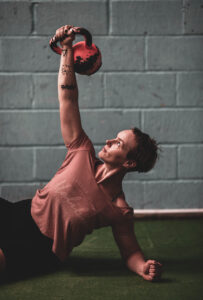
Let’s start with the only ones you really need and the ones you really need to master; The Big 6 Exercises; kettlebell swings, kettlebell snatches, goblet squats, the kettlebell press, kettlebell get-ups (Turkish Get Ups) and kettlebell cleans.
These are compound exercises, which means that they engage the whole body to work as one unit, and they mimic real-life activities. Translated: they have immeasurably more point than anything with the word “raise” in the exercise name, or anything that has a body part in the name.
That way time-wasting lies.
Your first kettlebell exercises to master are out of those six are…
… all of them!
Each exercise, with the right instructor, can be broken down into constituent parts and built up from there, and each exercise incorporates a functional human movement, thus you cover all of your bases for balanced training.
-
Train for strength and muscle: turkish get-ups, overhead presses and goblet squats.
-
Train for speed and athleticism: cleans, swings and snatches.
Master the basics and you won’t need much else.

Considerations when choosing a kettlebell
- What are you training for?
-
- Have you got a place you need to get to, a specific goal? Being stronger and more powerful will make you better at everything. Literally everything. Kettlebells will make you better at everything. So obviously you need some.
- Don’t think that heavier is better though because you’re already strong. Have you spent most of your lifting life under a barbell? Get ready to be humbled by a fraction of the weight you think you can squat.
- Do you just want to change your body shape and/or size? Kettlebell training will do that. But choosing weights based on the oft-touted notion that light weights “tone” your body will get you nowhere. Literally, it won’t work. Bodies don’t respond to light weights. Nobody’s body, not even women’s (I know, that’s what they told you, but they lied)
- Learn to lift the right amount of weight to change your body – I say learn, because anyone can pick up 2kg and do something with it (as discussed, that won’t work) but you need to learn to lift 16kg overhead. Find someone to teach you lifting techniques and you’ll be set free from the hamster wheel of light weights and endless cardio.
It’s usually better to be training with a goal in mind that’s something not to do with appearance. It’s a game where you never win. Start to consider yourself an athlete; because the pursuit of athletic brilliance comes with the support of nutrition, sleep, rest, and respect for the process. The pursuit of smaller thighs comes with self-hatred. From which nothing good ever came.
- Quality of the kettlebell
- As previously discussed, cast iron is the only serious option.
- The shape matters, you want it to be round like a cannonball.
- Stay away from plastic ones – trust me. Yes I know they are cheaper. They are cheaper for a good reason and it’s not a reason you’ll enjoy.
- If it’s hard to hold, that means you’ll need to work on your grip strength. Do this. Nobody ever said “I wish my grip wasn’t so good”.
What weight kettlebell do I need?
You need to get a weight that challenges you.
What’s the best weight kettlebell for a man or woman?
Women – 8kg-12kg to start with (you’ll outgrow the 8kg quickly but it can be a great place to build foundational strength at first)
16kg+ when experienced
Men – 12kg-20kg to start with
24kg+ when experienced.
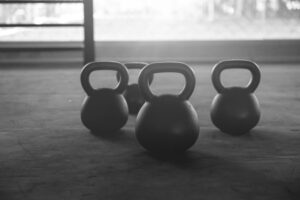
Don’t forget that you’re never finished with kettlebells. There are always things to learn, practice and tweak, especially each time you move up a weight.
There will always be a level up.
YOU have always got a level up.
What’s the best weight for kettlebell swings?
As heavy as you can do 10 good quality swings for at a time, for around 100 swings per training session. There’s leeway here, but this is a good starting place.
One of the things that might surprise you if you’re nervous about lifting heavy, is that to learn a strength movement, a heavier weight often informs the movement. You can cheat a light weight. But you cheat, you can’t lift the right weight. This is very true for swings. The heavier weight forces you to lockout properly and not lift with your arms.
What’s the best weight for a kettlebell press?
Kettlebell presses are great for evening your body out and forging a core of steel- you’re usually stronger on one side than the other, but kettlebell presses can level up that strength.
You’ll need a kettlebell lighter than you can swing but don’t be put off by this if you can only buy one kettlebell. Start with what you can press and when it comes to swinging you can do more reps, overspeed or single arm swings with a lighter weight and still build strength.
What’s the best weight kettlebell for building strength?
Strength happens via the mechanism of progressive overload. This means that as your body adapts to what you do to it, you increase how hard the thing is that you do to it.
You can do this in three main ways:
-
Increase the weight you use
-
Increase how many times you do a movement
-
Increase how hard the movement is through tempo or range of motion.
If we take out number 1, you can see that there are two more ways you can get stronger with the same weight kettlebell.
Kettlebells are one of the best investments into your health you can get Once you’ve got one, its unlikely you’ll ever sell it or use it for anything other than making you feel good (they do double up as great door stops or weapons against intruders though!). There is always a movement or improvement you can make with any kettlebell weight that you choose, but as we’ve already talked about – you need to find a good teacher. Be picky. This matters.
How many kettlebells do I need?
One to start with, but three could be all you ever need.
Even if you only have one and want to take it on holiday then you can complete full body training with one weight of kettlebell and for a long period of time.
Choose your kettlebell instructor wisely and it will be the best investment of money, time and health you will ever make.
++++++++++++++++++++++++++++++++++++++++++++++++++++++++++++++++++++++++++++
Juno Fitness
 I’m Shell Gilkes, a personal trainer for women who train their bodies to be strong, healthy and powerful. I empower women to help them to feel confident in their bodies through the power of movement.
I’m Shell Gilkes, a personal trainer for women who train their bodies to be strong, healthy and powerful. I empower women to help them to feel confident in their bodies through the power of movement.
Think about it; how would it feel to focus on what your body can do (cool stuff like press-ups and deadlifts) and how it feels (strong, mobile, powerful, full of energy), rather just on what it looks like?
We cannot be too strong. Join the movement. Come along. Everyone is welcome.
Email me: info@juno-fitness.co.uk
Call me: 07963727581
